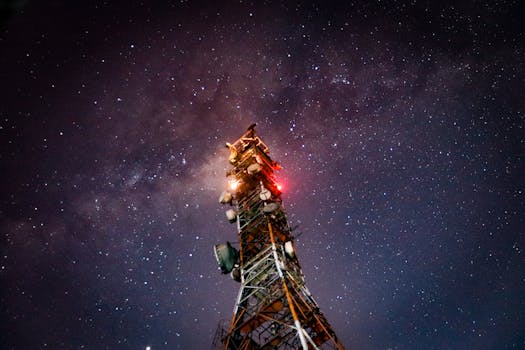Starlink: Revolutionizing Global Internet Connectivity with Satellite Technology
Starlink is a satellite constellation developed by SpaceX, aiming to provide fast, reliable, and global internet connectivity. With its cutting-edge technology, Starlink is revolutionizing the way we access the internet, bridging the digital divide, and transforming the telecommunications industry.

Starlink: Revolutionizing Global Internet Connectivity with Satellite Technology
Starlink, the focus keyword, is a satellite constellation developed by SpaceX, a private aerospace manufacturer and space transport services company founded by Elon Musk. The primary goal of Starlink is to provide fast, reliable, and global internet connectivity, bridging the digital divide and transforming the telecommunications industry. With its cutting-edge technology, Starlink is poised to revolutionize the way we access the internet, making it faster, more affordable, and widely available.
The concept of satellite internet is not new, but previous attempts have been hindered by high latency, limited bandwidth, and expensive equipment. Starlink, however, is taking a different approach. By launching a constellation of low-Earth orbit (LEO) satellites, Starlink aims to provide internet connectivity with latency as low as 20ms, comparable to fiber-optic cables. This is achieved through the use of advanced phased array technology, which allows the satellites to communicate with each other and with ground stations, creating a network of interconnected satellites that can provide seamless and uninterrupted internet connectivity.
How Starlink Works
Starlink’s satellite constellation consists of thousands of small satellites, each weighing around 260kg, orbiting the Earth at an altitude of approximately 550km. These satellites are equipped with advanced Hall effect thrusters, which enable them to maintain their position and altitude. The satellites communicate with each other and with ground stations using radio waves, and the data is then transmitted to the user’s device through a small terminal, similar to a satellite dish.
The Starlink system consists of three main components: the user terminal, the satellite constellation, and the ground stations. The user terminal is a small, compact device that can be installed at the user’s location, providing internet connectivity through a wireless connection. The satellite constellation is the network of LEO satellites that provide the internet connectivity, and the ground stations are responsible for communicating with the satellites and routing the data to its final destination.
Benefits and Applications of Starlink
Starlink has numerous benefits and applications, ranging from providing internet connectivity to remote and underserved communities to enabling global communication and data transfer. Some of the key benefits of Starlink include:
Global coverage: Starlink provides internet connectivity to anyone, anywhere in the world, regardless of their location. This makes it an ideal solution for remote and underserved communities, as well as for emergency responders and disaster relief teams.
Fast and reliable: Starlink’s advanced technology provides fast and reliable internet connectivity, with latency as low as 20ms. This makes it suitable for applications that require real-time communication, such as online gaming, video conferencing, and virtual reality.
Affordable: Starlink aims to provide internet connectivity at a lower cost than traditional satellite internet providers. This makes it an attractive option for individuals and businesses that require reliable and fast internet connectivity.
Challenges and Limitations of Starlink
While Starlink has the potential to revolutionize the telecommunications industry, it also faces several challenges and limitations. Some of the key challenges and limitations include:
Interference: Starlink’s satellite constellation operates on the same frequency band as other satellite systems, which can cause interference and affect the quality of the internet connectivity.
Regulation: Starlink is subject to various regulations and laws that govern the use of satellite technology and internet connectivity. This can create challenges for the company as it expands its services globally.
Cost: While Starlink aims to provide internet connectivity at a lower cost than traditional satellite internet providers, the cost of launching and maintaining the satellite constellation is still relatively high.
In conclusion, Starlink is a revolutionary satellite constellation that has the potential to transform the telecommunications industry. With its cutting-edge technology, global coverage, and fast and reliable internet connectivity, Starlink is poised to bridge the digital divide and provide internet connectivity to anyone, anywhere in the world.


